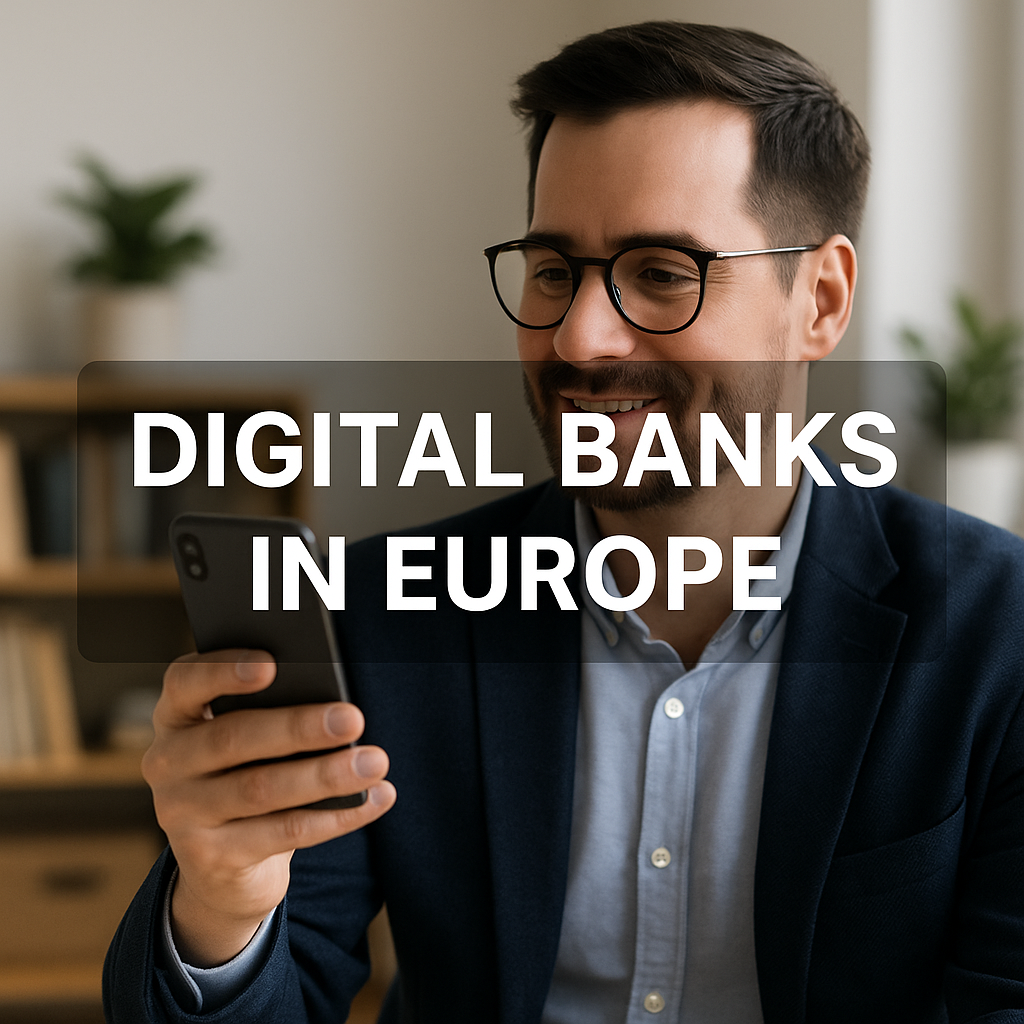The digital banking revolution is in full swing across Europe. With user expectations rising and technology evolving rapidly, traditional banks are facing stiff competition from fully digital players.
Digital banks in Europe are not just alternatives anymore—they’re often the preferred choice for millions.
In this article, we explore the top digital banks transforming the European financial landscape and why they’re winning over users across the continent.

Revolut: The All-In-One Financial Super App
Revolut has become a household name in the European fintech scene. Offering a wide range of services—from current accounts and currency exchange to cryptocurrency and stock trading—it’s a true all-in-one platform.
With its sleek app interface, users can easily manage spending, set budgets, and analyze their financial habits.
Revolut’s global accessibility and robust security features make it a favorite for travelers and remote workers alike.
N26: Where Simplicity Meets Functionality
Hailing from Berlin, N26 is known for its minimalist design and functional features. The bank offers fee-free foreign transactions, real-time spending notifications, and a fully mobile experience.
What makes N26 stand out is its transparency—no hidden fees, clear account structures, and a customer-first approach. It’s ideal for users who want a stress-free banking experience with modern tools.
Bunq: The Green Bank for the Modern User
For eco-conscious users, Bunq is a game-changer. Headquartered in the Netherlands, this digital bank emphasizes sustainability, allowing users to track and offset their carbon footprint directly through the app.
Bunq also offers features like automatic savings, joint accounts, and multi-currency IBANs. It’s ideal for users who want more control over their money—and its environmental impact.
Monzo: Everyday Banking Made Effortless
Monzo, based in the UK, offers an ultra-user-friendly experience. It provides instant transaction alerts, spending analytics, and smart budgeting tools that help users stay in control of their finances.
Monzo has also expanded into business banking and continues to innovate with features that make everyday banking more transparent and responsive.
Starling Bank: Powerful Tools for Personal and Business Use
Also from the UK, Starling Bank offers comprehensive banking services that go beyond the basics. From personal accounts and savings to business accounts and loans, Starling provides robust features for diverse needs.
Its award-winning app is packed with smart tools like goals-based savings spaces and spending breakdowns, making it a versatile option for both individuals and entrepreneurs.
Wise: Simplified Global Banking
While not a traditional bank, Wise—formerly TransferWise—has revolutionized international finance. Offering multi-currency accounts and low-cost cross-border payments, Wise is ideal for expats, freelancers, and global businesses.
Users benefit from real exchange rates, fast transfers, and the ability to hold and convert over 50 currencies within one app.
Hello Bank!: Digital With a Personal Touch
Operating in countries like France, Belgium, and Germany, Hello Bank! merges the convenience of digital banking with personalized support. Backed by a major European bank, it offers comprehensive financial services, including loans, insurance, and investments.
Its localized approach ensures that customers receive services tailored to regional needs, while still enjoying a modern digital interface.
Monese: Borderless Banking for Expats and Migrants
Monese targets users who struggle to open traditional bank accounts—such as expats, immigrants, and digital nomads. It allows quick account setup without needing proof of local address or credit history.
Offering multi-currency accounts and real-time payments, Monese is built for flexibility and inclusivity, making it one of the most accessible digital banks in Europe.
Bank of Georgia: A Hidden Gem in Eastern Europe
Among Eastern Europe’s rising stars, Bank of Georgia has been pushing digital innovation to new heights. Known for its AI-powered services and personalized user experience, it’s leading the way in blending traditional banking with cutting-edge tech.
Despite its regional base, the bank offers a level of service that rivals the best in Western Europe, especially in terms of mobile functionality and customer support.
Curve: Your Financial Dashboard
Curve offers a unique take on digital finance. Rather than acting as a traditional bank, Curve allows users to connect all their debit and credit cards into a single smart card and app.
This lets users manage their spending across multiple accounts, with real-time notifications and budgeting tools. Curve’s standout feature is “Go Back in Time,” which allows users to switch the card used for a transaction up to 30 days later.
Key Features Users Should Look For
Choosing the best digital bank depends on your lifestyle and financial goals. Here are some features to consider:
- Multi-currency support: Great for travelers and remote workers.
- Fee-free international transactions: Ideal for those with cross-border needs.
- AI-driven budgeting tools: Helps manage money smarter.
- Green initiatives: For users who value sustainability.
- User-friendly mobile apps: Essential for a smooth digital experience.
Why Digital Banks Are Thriving in Europe
Europe’s tech-savvy population, strong regulatory environment, and high smartphone penetration create the perfect conditions for digital banks to thrive.
These banks operate with lower overhead, allowing them to offer better interest rates, lower fees, and faster innovation. The pandemic further accelerated adoption as people demanded more flexible and remote-friendly banking options.
Final Thoughts: Which Digital Bank Is Right for You?
Europe’s digital banking scene is diverse, competitive, and growing fast. Whether you’re a traveler, freelancer, business owner, or sustainability advocate, there’s a digital bank in Europe that fits your needs.
With features like instant notifications, global transfers, and user-friendly apps, these banks offer a smarter way to manage your money.
As more users embrace fintech, the future of banking in Europe looks increasingly digital—and that’s a win for consumers.
